A couple of nights ago, @DornickMaxwell (good follow) tweeted out some stunning 1931 photos of the University of Michigan Golf Course.
University of Michigan Golf Course, 1931. pic.twitter.com/tlyaY8Axt1
— Perry Maxwell (@DornickMaxwell) December 6, 2021
We remarked that this course—designed by Alister MacKenzie and built by Perry Maxwell, but frequently used nowadays as a parking lot—is one of the best remaining opportunities for golf restoration in the United States. Several people replied that they’d like to see the rest of that list. So here’s a crack at it.
I find this topic pertinent right now because so many important American courses have been capably restored or renovated over the past 20 years. Milestone projects have included Bill Coore and Ben Crenshaw’s transformation of Pinehurst No. 2 and Gil Hanse’s overhaul of Los Angeles Country Club’s North Course. Tom Doak’s consulting at courses like Garden City, Crystal Downs, Somerset Hills, and Pasatiempo has also been influential. This year brought the good news that Yale Golf Course and Lookout Mountain Club will be restored, and in the past few months, two striking restorations, Hanse’s at Oakland Hills and Kyle Franz’s at Southern Pines, made their debuts.
All in all, it has been a fruitful time for American golf architecture. Many, arguably most, notable courses from the so-called “Golden Age” (roughly, the 1910s through the 1930s in the U.S.) have undergone some form of restoration. And while the boom is still humming along, the biggest, most obvious opportunities for this kind of work are becoming harder to find.
The remaining candidates fall into two buckets. First, there are courses that host high-profile tournaments and have been altered—or, in some cases, disfigured—in the name of achieving a standard of difficulty. At these courses, pure restoration is often not feasible. Like it or not, in order to meet the demands of today’s championship organizers, holes have to be lengthened, green speeds have to be pushed into the double digits, etc. So consulting architects at tournament venues are typically asked to strike a compromise between restoration and modernization. One of the best recent examples of this balancing act is Gil Hanse’s historically informed renovation of next year’s PGA Championship host, Southern Hills Country Club.
The other bucket contains courses that serve the regular golfer and don’t need to worry about the championship game. Almost across the board, these courses would be well served by a faithful restoration. The problem is that many of these facilities are public-access and rely on green fees from daily play, so they would face significant business risk if they were to close down for construction. Private clubs that collect monthly dues from members find it far easier to rope off a few holes, or all 18, and carry out an ambitious master plan. The result is that many of the most tantalizing restoration opportunities left in American golf today are at public courses, often government-owned ones.
That said, not every course built in the Golden Age should be restored. The architects of that period weren’t perfect. Donald Ross was fully capable of producing uninspired courses, especially when he designed them from his office. Same goes for Tom Bendelow, A.W. Tillinghast, or really any designer of any era. So our reverence for the golf architecture of the 1910s, 20s, and 30s shouldn’t prevent us from occasionally trying to improve on it.
Two notes before we dive in: 1) This list does not include courses where restoration plans are currently underway; 2) A couple of the entries below were written by The Fried Egg’s managing editor Garrett Morrison and are marked as such.
◊
1. Augusta National Golf Club (Augusta, Georgia)
Original architect: Alister MacKenzie, 1933
Let’s get this out of the way: Augusta National will never be restored to its 1933 form. While that version of the course would be delightful to see, it would play too short for today’s top male players. So the best-case scenario for the Masters host is to turn the clock back to its pre-2000, pre-“Tiger-proofing” style, with treelines pushed back out and wide fairways transitioning gracefully into pine straw. As an added touch, how about bringing back a tiny bit of MacKenzie’s jaggedness to the bunkers? We can dream, at least.
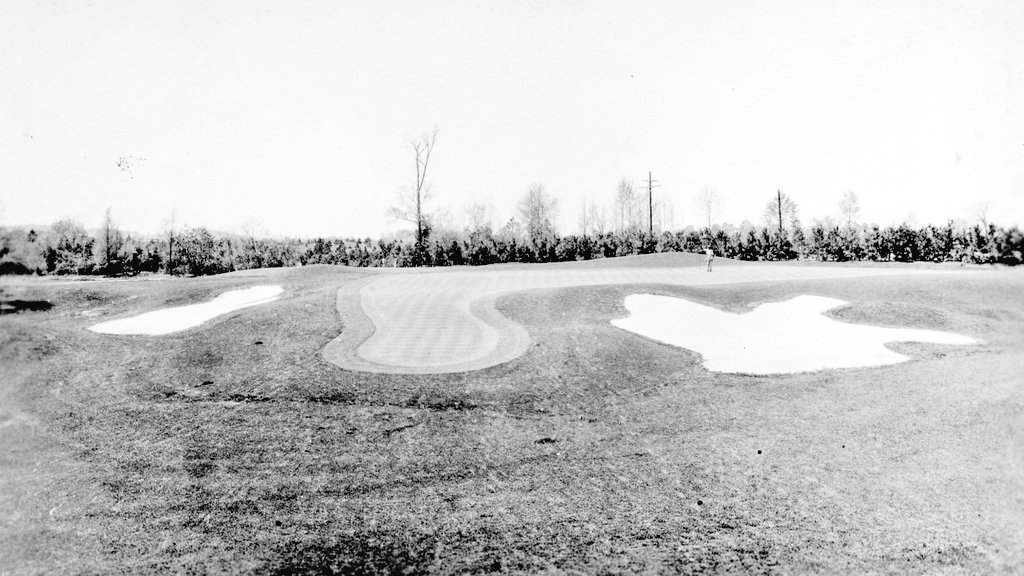
The original 13th (in today's numbering, 4th) green at Augusta National
More on Augusta National:
- How Augusta National Has Evolved (article)
- No. 13 at Augusta National: A Postmortem (article)
- All 18 at Augusta National with Geoff Ogilvy (podcast)
2. Riviera Country Club (Pacific Palisades, California)
Original architect: George C. Thomas Jr., 1927
The longtime host of the L.A. Open Genesis Invitational was one of the most ambitious projects George Thomas and his construction man Billy Bell ever took on. Built in a narrow canyon, Riviera was Thomas and Bell’s costliest course, and it opened to immediate acclaim. The path to a successful restoration is fairly obvious here. Of the top three courses on this list, Riviera has held up best to modern equipment advances, so the club could simply restore the original barrancas, bunker styles, and green dimensions without monkeying around with hole lengths or fairway widths. Riviera is currently one of the best golf courses on the West Coast, but it could be one of the best in the country.
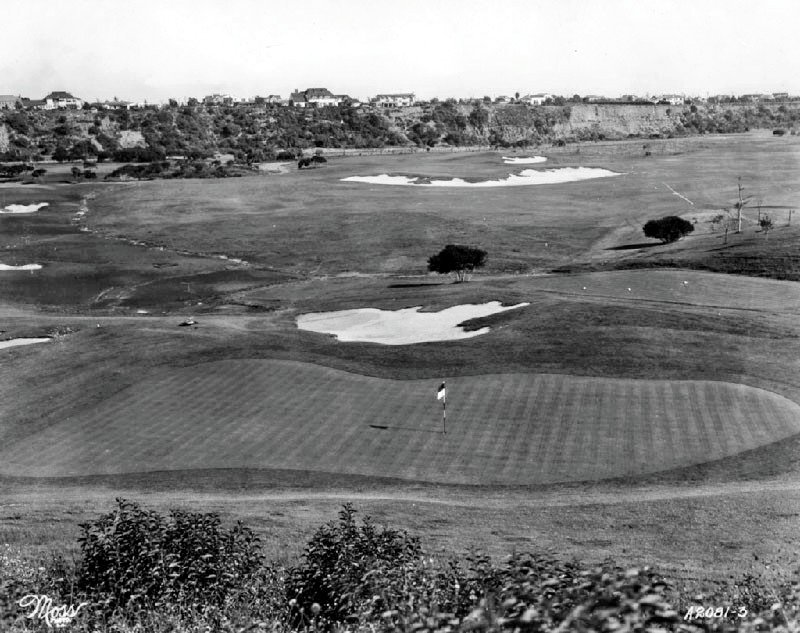
A late-20s view of the 10th hole (midground) at Riviera
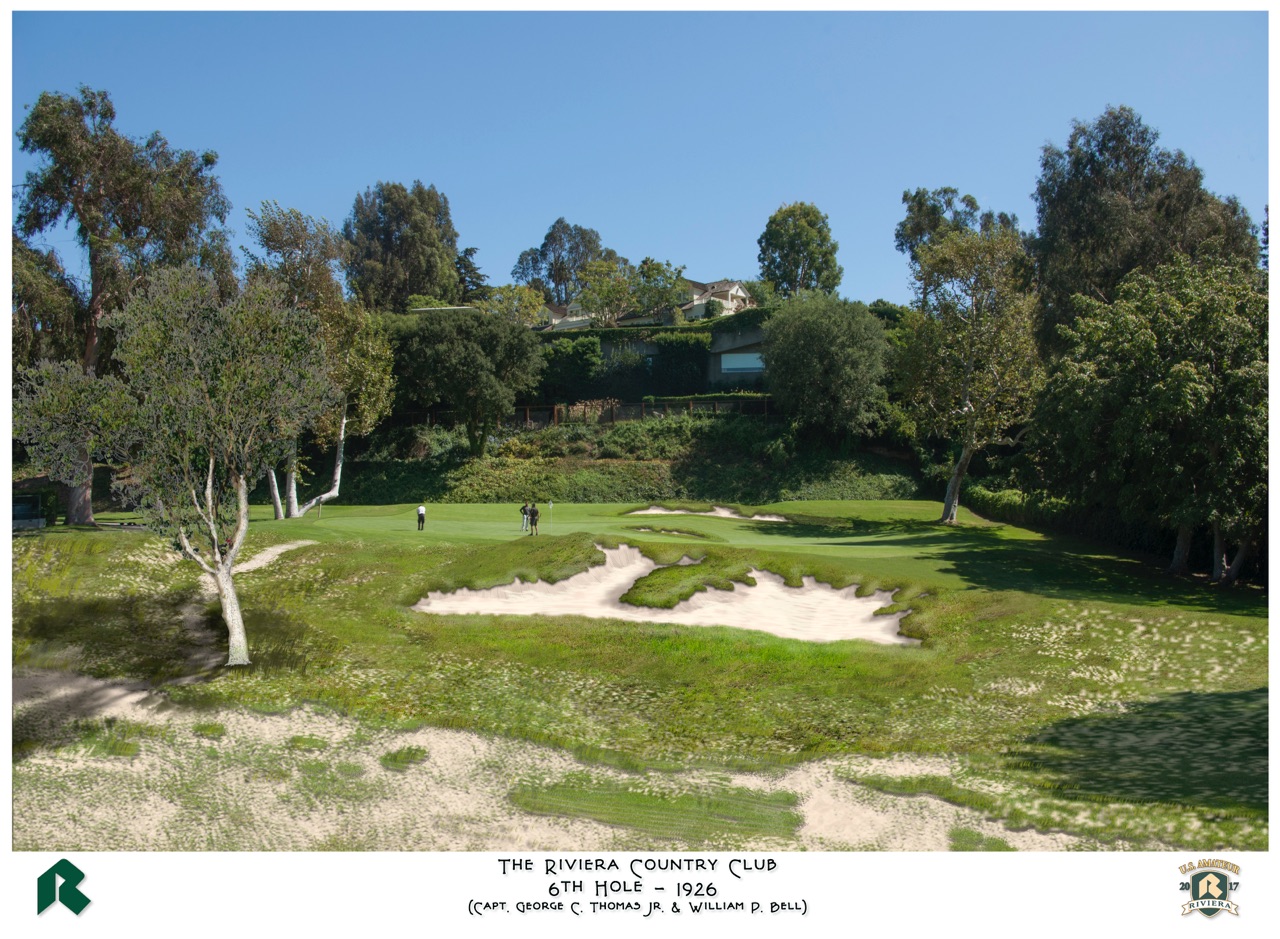
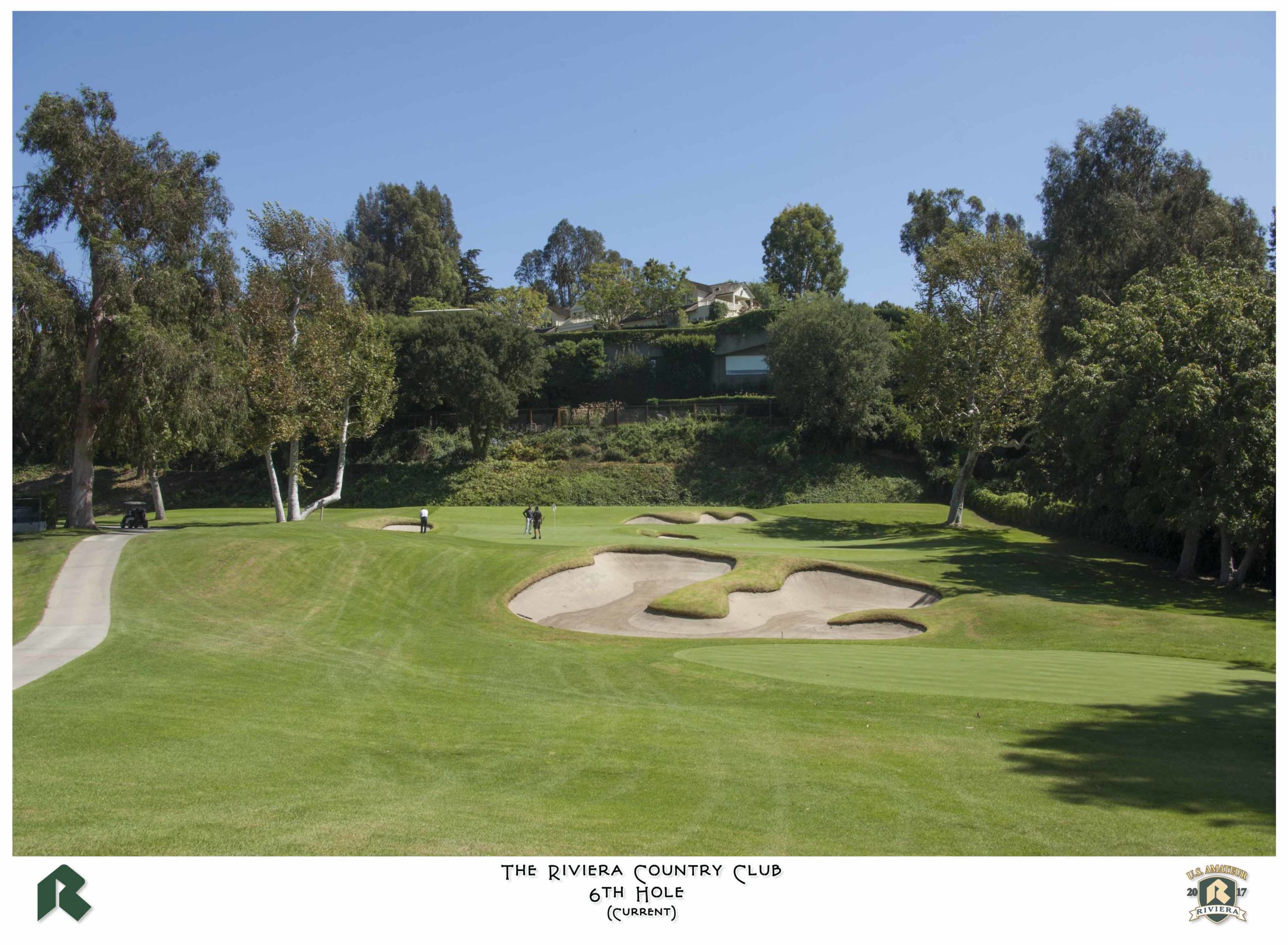
More on Riviera:
- A George Thomas Classic: Riviera (article)
- Bringing Showtime Back: The 10th at Riviera (article)
3. Pebble Beach Golf Links (Pebble Beach, California)
Original architects: Jack Neville and Douglas Grant, 1919
Pebble Beach’s gorgeous setting and strong routing result in nine holes that could be considered among the best in golf. Still, the course is a shadow of what it could be. The bunker shaping is inconsistent and poorly blended in with the landscape, the fairway widths no longer match the scale of the property, and many of the greens have shrunken to comical sizes. Yet Pebble Beach remains one of the greatest courses in the world. While it’s clear that the course could be improved, it’s less clear how. No other top-10 course in America has as muddled an architectural history. Neville and Grant’s original course was beautifully routed but somewhat rudimentary otherwise. Chandler Egan and Alister MacKenzie’s work in the late 1920s created some images that are popular on social media today, but faux dunes were never going to work on clay soil. So a sympathetic renovation would seem to be the solution, but it’s doubtful that anyone in the Pebble Beach Company has the vision or will to push for one.
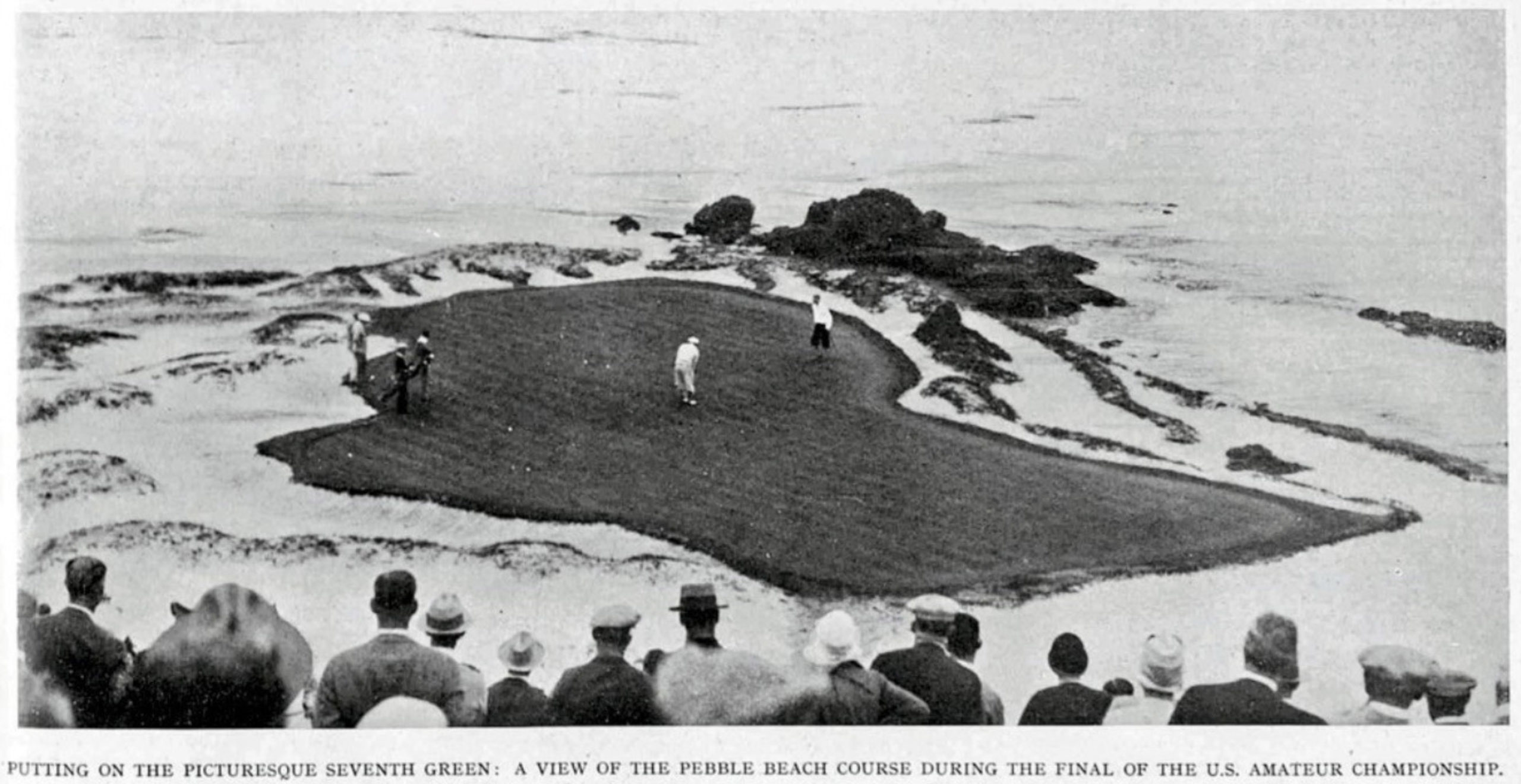
The 7th hole at Pebble Beach, redesigned by Chandler Egan for the 1929 U.S. Amateur. The size and shape of the green, not the manufactured dunescape, should be the object of obsession here.
More on Pebble Beach:
- Sidehill Lies and Small Targets: Pebble Beach (article)
- A Simple Change: The 7th at Pebble Beach (article)
- Pebble Beach Golf Links with Garrett Morrison (podcast)
4. TPC Sawgrass – The Stadium Course (Ponte Vedra Beach, Florida)
Original architect: Pete Dye, 1981
When TPC Sawgrass opened, it was a sight to behold. Pete Dye’s swamp creature was rugged and wild, with unmanicured expanses and crazy greens. Over the years, step by step, the PGA Tour smoothed out the course’s edges in response to complaints from the pros. Greens were neutered, scrub was replaced with lush grass, and everything became very green. The Stadium Course now looks more like Augusta National than a 1981 Pete Dye design. Oh, and the 12th hole keeps getting changed every year.
More on TPC Sawgrass:
- Making TPC Sawgrass (podcast)
- Slope and Firmness: The Drivable Par 4 Recipe (article)
5. Ojai Valley Inn Golf Course (Ojai, California)
Original architect: George C. Thomas Jr., 1925
In 1925, George Thomas wrote that he considered Ojai Country Club to be “far and away above the best” of his golf courses. That’s quite a claim; by that time, he was responsible for a number of excellent designs in Southern California. But it’s not hard to see why Thomas loved Ojai. The property is beautiful and varied—full of barrancas, elevation changes, and sudden reveals of mountain vistas. Unfortunately, the current owners of Ojai Valley Inn and Spa appear to be more interested in their hotel facilities than the golf course. Recently, they have started literally putting buildings on top of Thomas’s holes. So it’s unlikely that we’ll get even a portion of the original course back, but we can hope. -Garrett Morrison
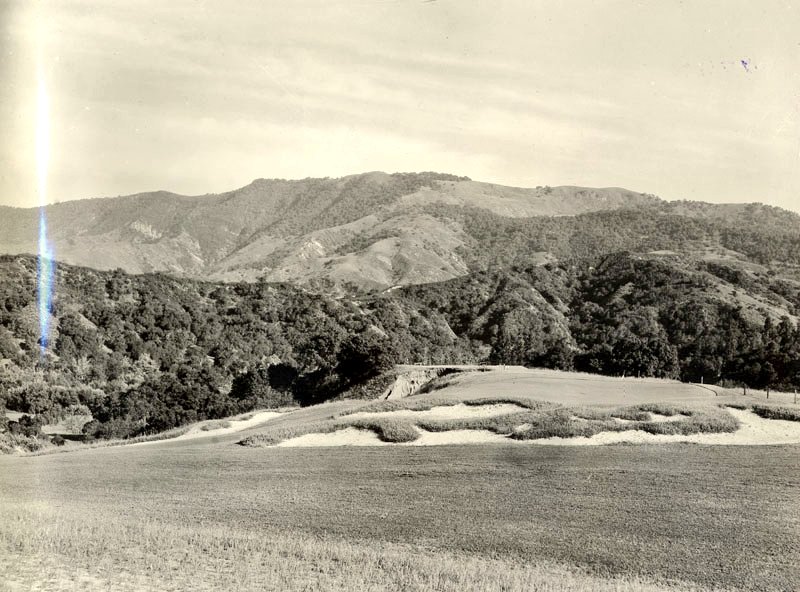
The original 3rd hole at George Thomas's Ojai Country Club
More on Ojai Valley:
- The Lost Course: Ojai Valley Inn (article)
6. University of Michigan Golf Course (Ann Arbor, Michigan)
Original architects: Alister MacKenzie and Perry Maxwell, 1931
There aren’t many Alister MacKenzie courses outside of California and even fewer that allow public play. So the University of Michigan Golf Course, the best candidate for restoration in the Midwest, is a rarity, but its deep-pocketed owner doesn’t treat it like one, especially on game days. Almost all of the original green pads are still there, and there’s no mistaking how well suited the rolling ground is to golf. Allegedly, all that’s needed for a restoration to happen is a donor who doesn’t mind not having his or her name on the course.
7. George Wright Municipal Golf Course (Hyde Park, Massachusetts)
Original architect: Donald Ross and Walter Irving Johnson, 1938
If restored fully, George Wright would be, in my opinion, the best municipal course in the country. Donald Ross draped his holes over dramatic slopes, saving the most detailed earthmoving for his excellent greens. Lately, architect Mark Mungeaum and superintendent Len Curtin have improved the course as much as possible given a limited budget and a small maintenance team. What their work has revealed is how high George Wright’s ceiling truly is.
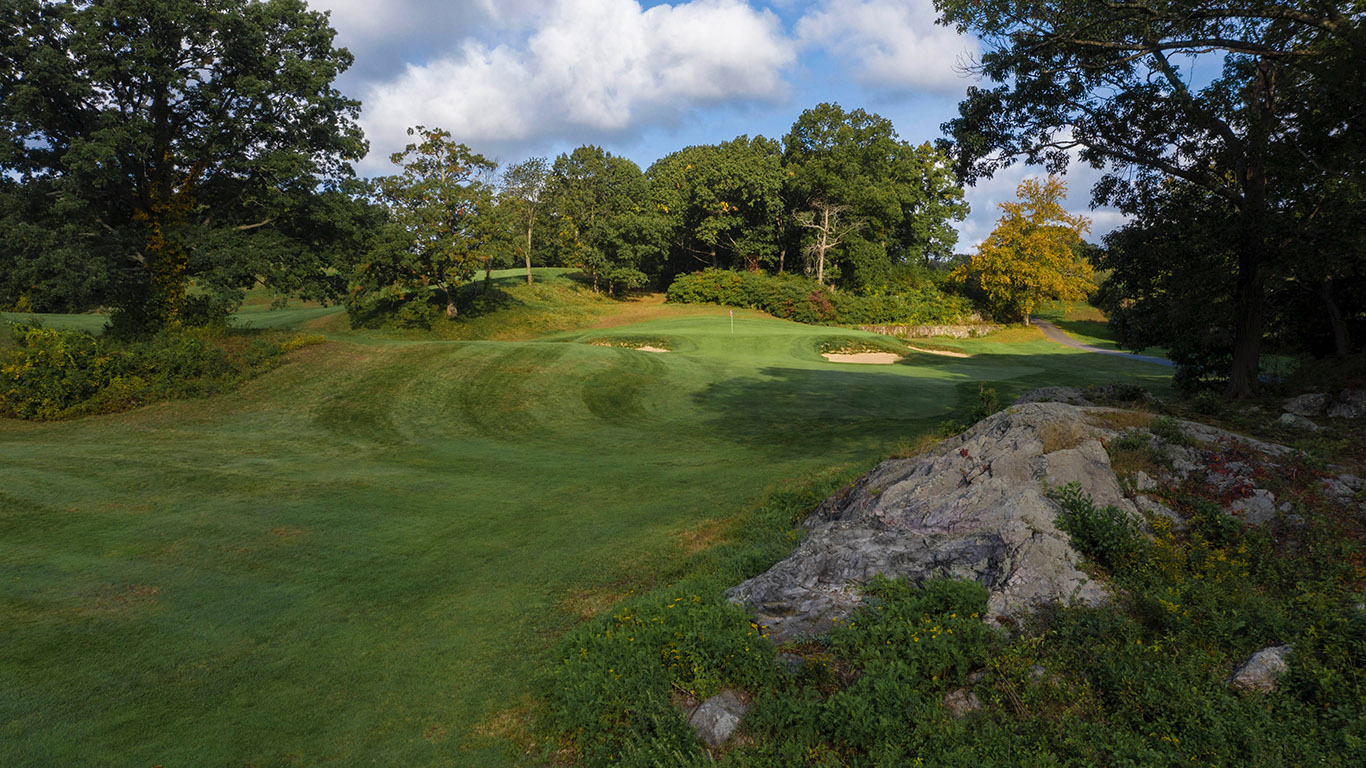
Photo credit: Andy Johnson
More on George Wright:
8. Kankakee Elks Country Club (Kankakee, Illinois)
Original architect: William Langford and Theodore Moreau, 1926
You may be surprised to hear this, but little Kankakee Elks is the only course in Illinois that can compete with Chicago Golf Club for the best 18 green designs. But while Chicago Golf’s greens are presented perfectly, most of Kankakee Elks’ are about half the size they should be. With green and fairway expansions as well as some tree removal, Kankakee Elks could become a top-five course in the state.
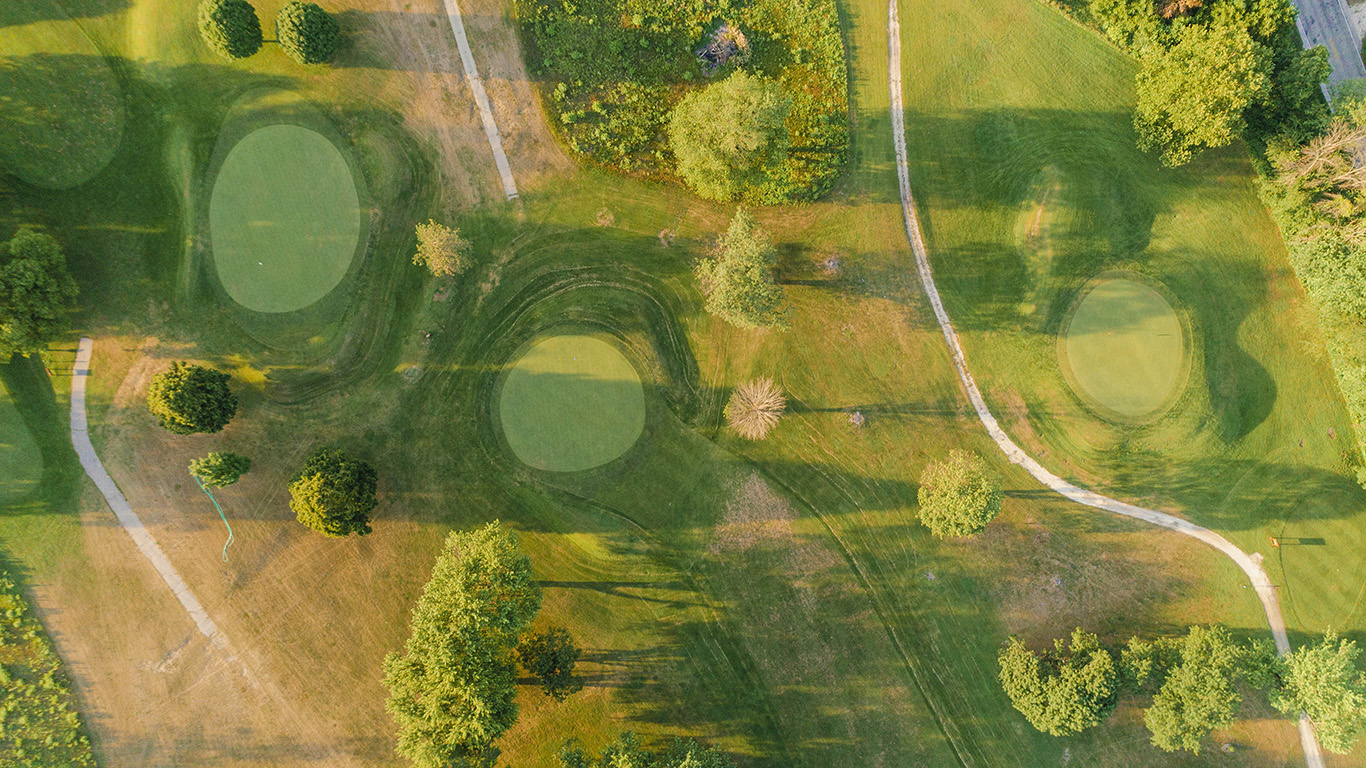
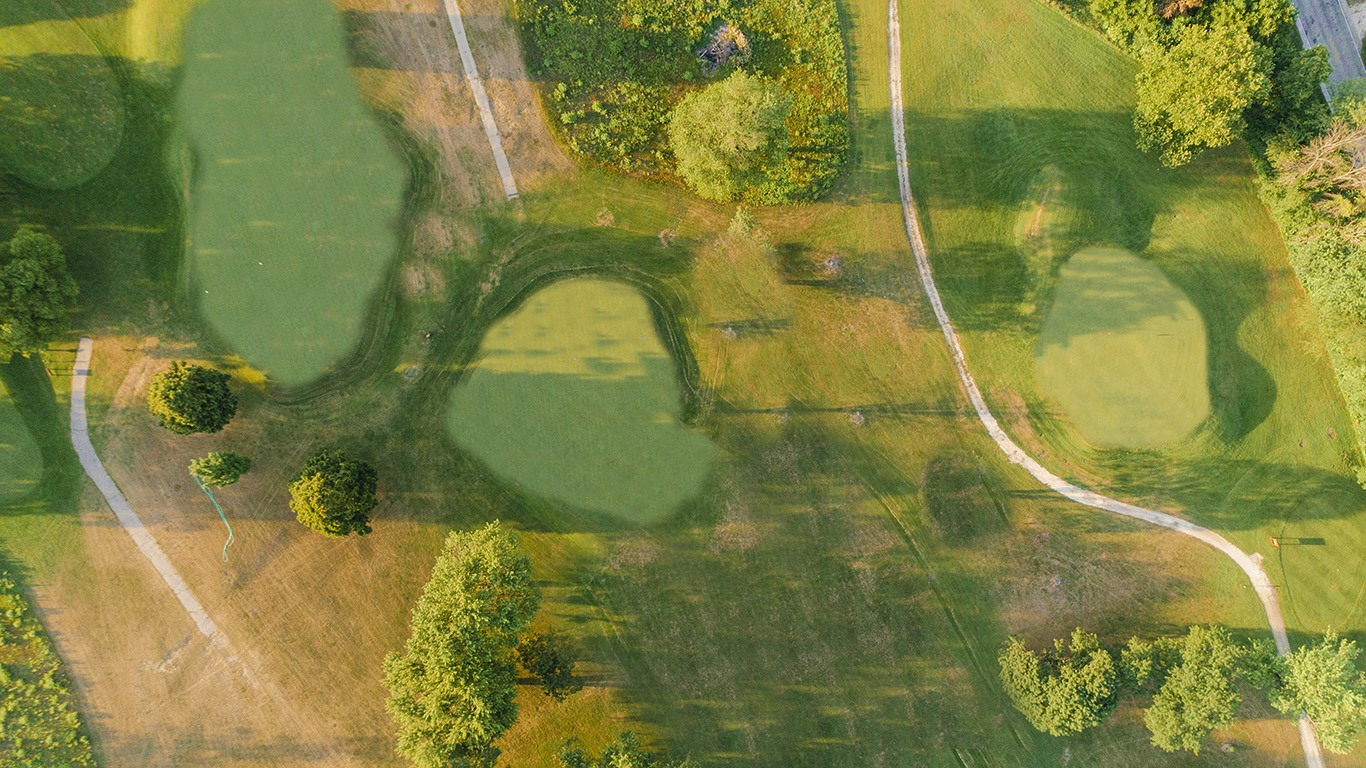
9. Timber Point Country Club (Great River, New York)
Original architect: Charles Hugh Alison, 1927
While C.B. Macdonald’s lost Lido grabs everyone’s imaginations, there’s another seaside course on Long Island that needs to be—and actually could be—revived. Timber Point, now public, has 27 holes, 12 of which were part of the initial C.H. Alison design. In its early days, Timber Point was considered one of the best and most difficult courses in America. Daniel Wexler, in his book Missing Links, suggests if it were still intact, “a top 15-25 ranking [in the country] seems about right.” So maybe Timber Point’s best move would be to shed nine holes and restore as many of the rest as possible. After all, there’s certainly a demand for great accessible golf on Long Island.
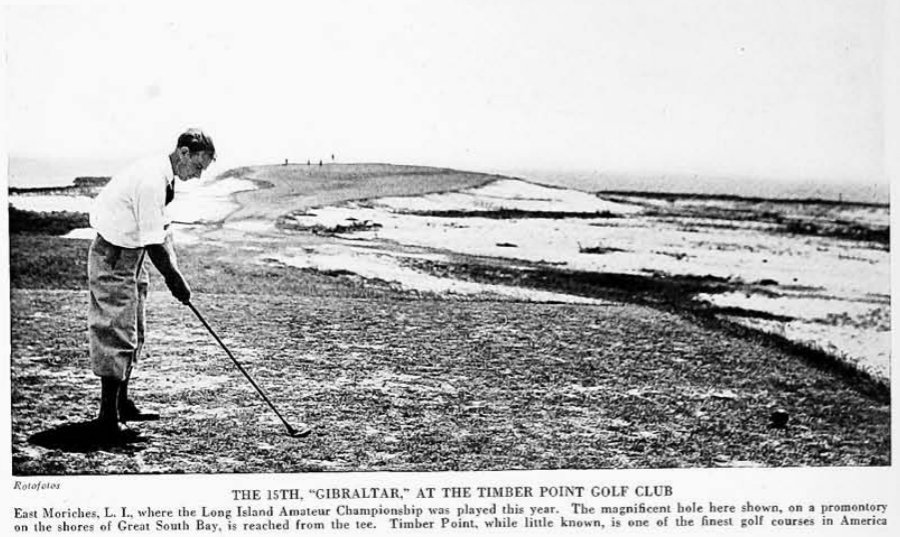
Research credit: Simone Haines @hainesy76
10. Sleepy Hollow Golf Course (Brecksville, Ohio)
Original architect: Stanley Thompson, 1924
Between Sleepy Hollow, designed by Stanley Thompson, and Manakiki, designed by Donald Ross, Cleveland Metroparks is sitting on a gold mine. Sleepy in particular is one of the finest municipal courses in the U.S. despite decades of neglect. While Thompson is an icon of golf architecture in his native country of Canada, he has a relatively small profile in the States, so Sleepy Hollow could serve as a great, accessible introduction to his brilliance.
11. Pine Barrens at World Woods Golf Club (Brooksville, Florida)
Original architect: Tom Fazio, 1993
Meant to be a public-access answer to Pine Valley, Pine Barrens is one of Tom Fazio’s most appealing courses. Yet poor management has resulted in shrunken fairways and greens. Once a must-see for public golfers, World Woods now feels like an afterthought. The Faz deserves better! (Well, this specific design does, anyway.)
12. Harding and Wilson at Griffith Park (Los Angeles, California)
Architect: George C. Thomas Jr., 1923 (Harding original design) and 1927 (Wilson redesign)
One of George Thomas’s first projects in California was an overhaul of Los Angeles’s municipal golf courses at Griffith Park. Thomas designed a new 18-hole course (Harding) and redesigned an existing one (Wilson), and he ended up footing the bill for a large portion of the construction. So Thomas’s courses at Griffith Park got off to a difficult start, and the decades since haven’t been much easier. Development has cut into the property, leading to redesigns of many holes. Recently, there was a glimmer of hope when L.A. won its bid to host the 2028 Olympic Games and intended to spend $75 million on the Harding and Wilson courses in preparation for the golf competition. But after the infrastructure failures in Sochi and Rio, the city decided to lean on established facilities, ultimately tapping Riviera for hosting duties.
13. Santa Anita Golf Course (Arcadia, California)
Original architect: James Harrison Smith, 1935
James Harrison Smith is like a one-hit wonder who blew everyone’s minds with his first song and refused to release anything else. The bold, unpredictable contouring of Santa Anita’s fairways is completely unique. With a little work, this could be one of the country’s top public courses. Unfortunately, when Gil Hanse and his team made some suggestions while they were working on LACC North, Santa Anita’s management decided to go another direction.
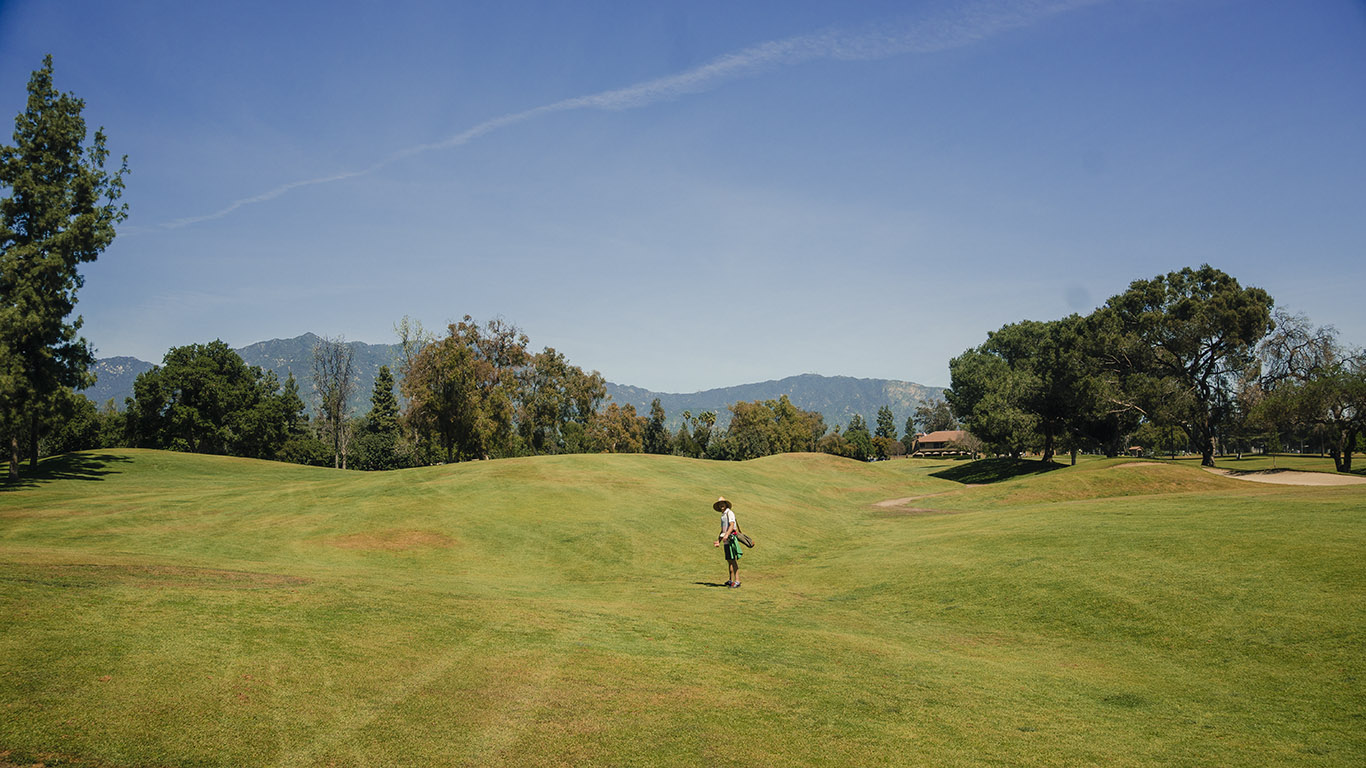
The amazing man-made mounding in the 18th fairway at Santa Anita. Photo credit: Andy Johnson
14. Black at Bethpage State Park (Farmingdale, New York)
Original architects: A.W. Tillinghast and Joseph Burbeck, 1936
Under the direction of the USGA and Rees Jones, Bethpage Black underwent a seismic transformation in 1999. This work turned a tough, scruffy muni into a championship venue capable of hosting the U.S. Open. Over the past 22 years, Jones has continued tinkering, and the course has moved further from its A.W. Tillinghast roots. Greens have gotten smaller, bunkers have intruded on the original green pads, and fairways have become narrower—a lot narrower. Bethpage Black is still a great course, but it’s a fraction of what it could be.
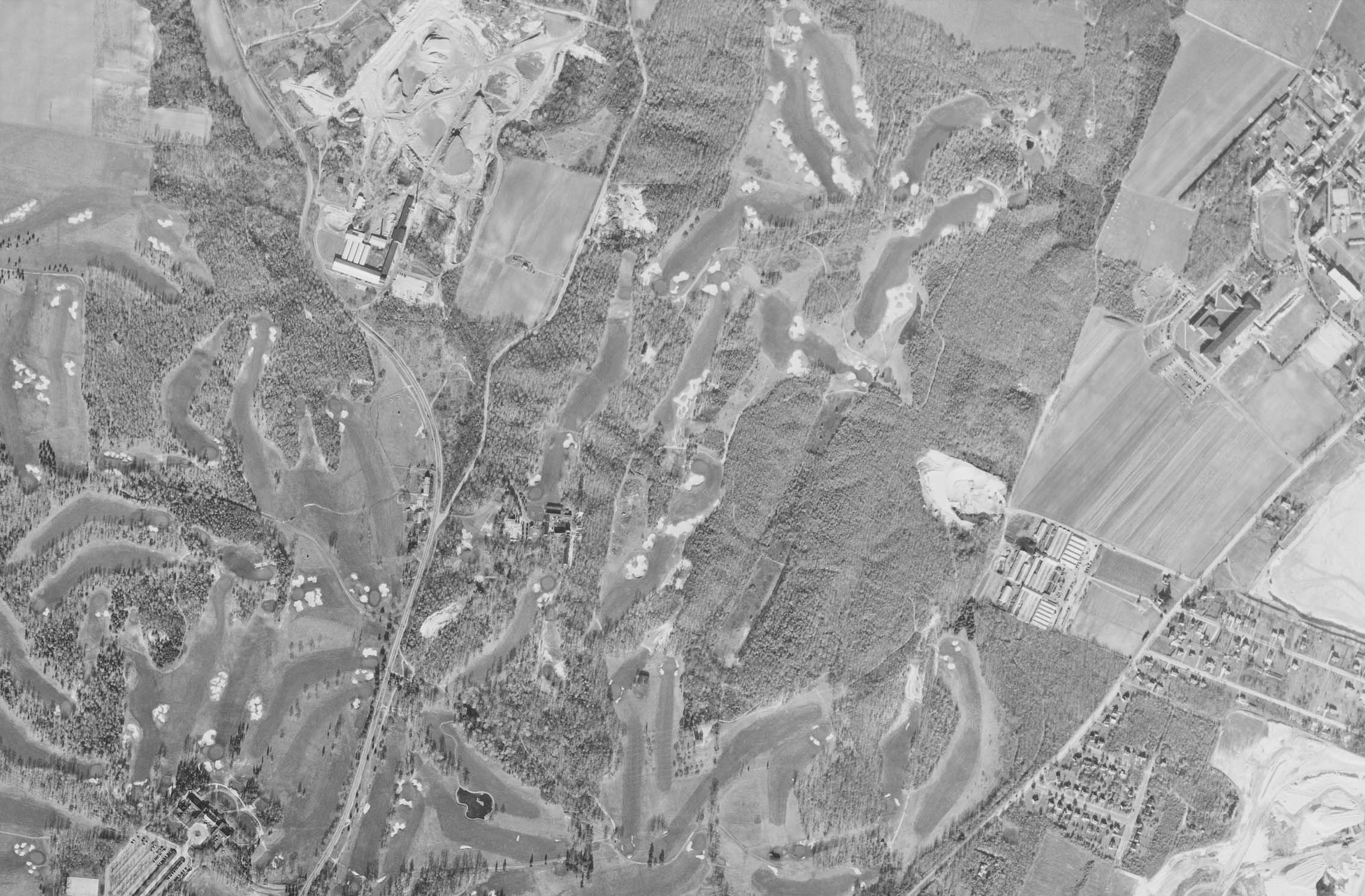
This early aerial of Bethpage Black shows the bunkering and fairway lines that are missing today (USGS)
15. Sharp Park Golf Course (Pacifica, California)
Original architect: Alister MacKenzie, 1932
Alister MacKenzie’s 1932 design at Sharp Park is pure fantasy fuel for golf nerds. Shared fairways! Scraggly bunkers! Two renditions of MacKenzie’s Lido-contest design! Holes on the freaking beach! But we have to be realistic: that version of Sharp Park isn’t coming back. The oceanside holes were washed away decades ago and replaced by a large sea wall. Nos. 2, 8, 4, and 6 on the map below are likely lost, too. But there are reasons for optimism. While fending off a legal challenge from environmentalist groups in the 2010s, Sharp Park picked up allies in the San Francisco Public Golf Alliance, the Alister MacKenzie Foundation, and architects Jay Blasi and Tom Doak. Momentum now seems to be in the old municipal course’s favor. Even if only six or seven MacKenzie holes were restored, that would be cause for celebration. -Garrett Morrison
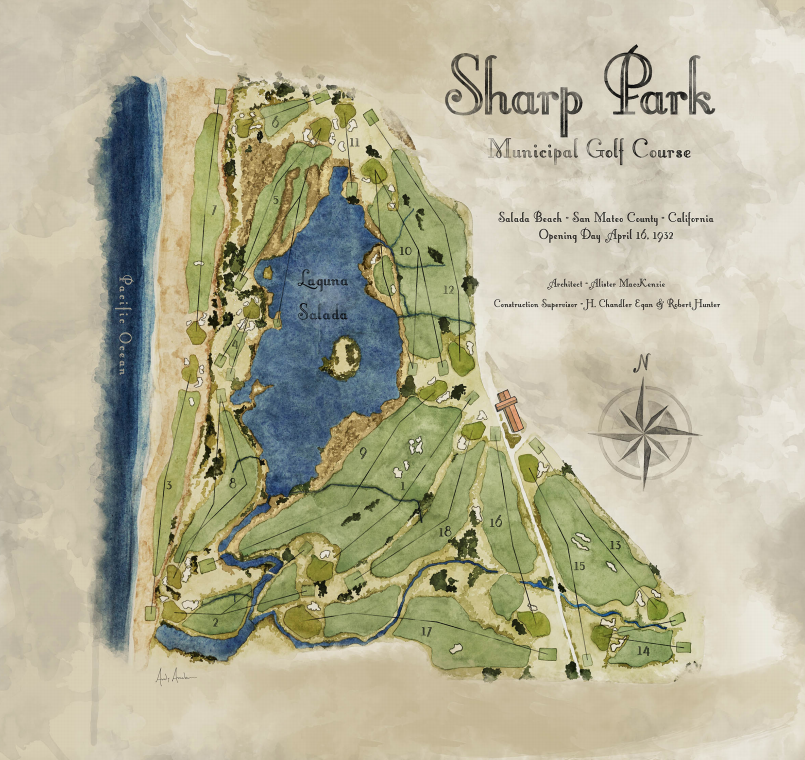
A rendering of the Alister MacKenzie design at Sharp Park, based on research by Tommy Naccarato
16. High Pointe Golf Club (Traverse City, Michigan)
Original architect: Tom Doak, 1989
Tom Doak’s first golf course is now a hops farm. But if you walk the land, many of the holes are still easy to make out. According to Doak himself, nine of them remain untouched by agriculture. So… anyone want to buy a hops farm?
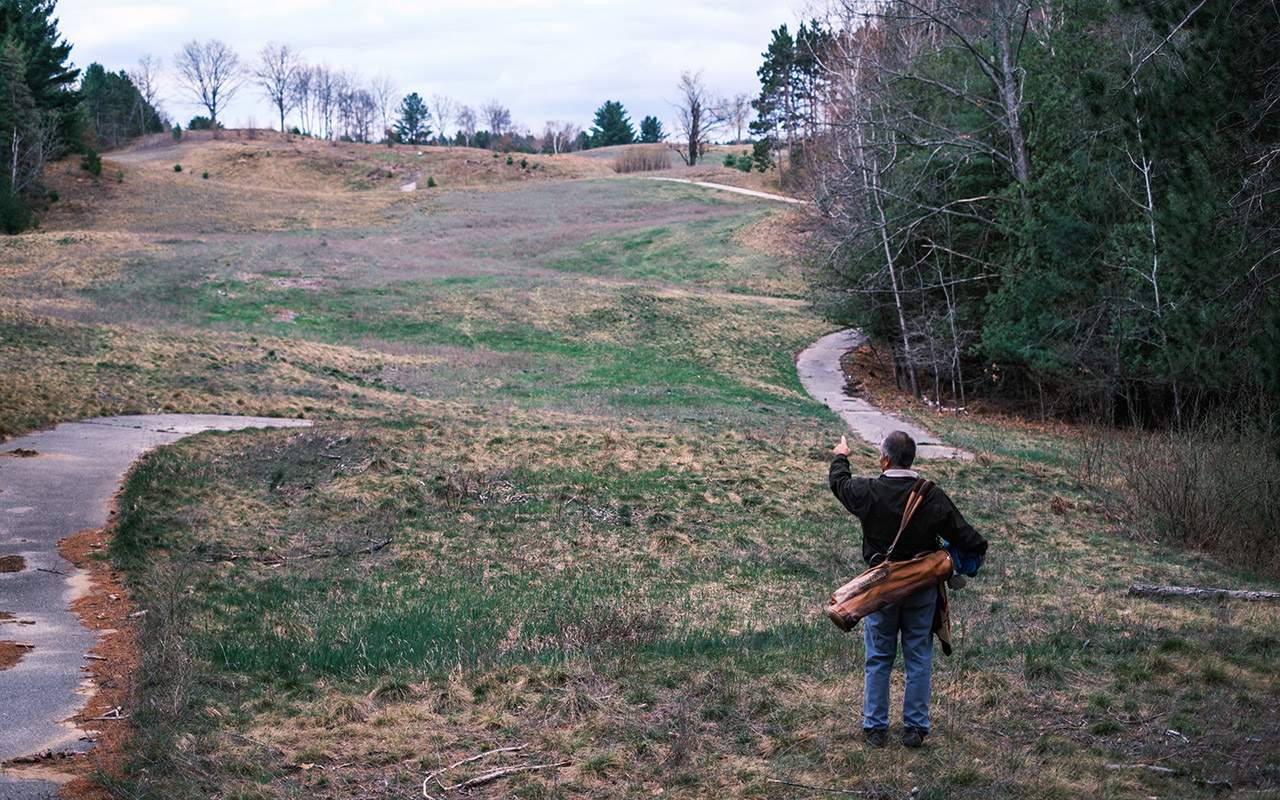
Tom Doak wandering lost corridors at High Pointe. Photo credit: Noah Jurik (@noahjurik on Instagram)
Five other notable restoration candidates (we know there are plenty more!)
Balboa Park Golf Course (San Diego, California)
Original architect: William P. Bell, 1919 and 1933
Balboa Park has a sporty nine-holer as well an 18-hole course winding through the canyons above downtown San Diego, but it’s in dire need of a visit from an architect who knows something about Billy Bell.
East Lake Golf Club (Atlanta, Georgia)
Redesign architect: Donald Ross, 1913
Home to the PGA Tour’s annual cash-grab net championship and a classic Reestoration, today’s East Lake is not super inspiring. The big question is whether the Donald Ross design was all that great in the first place.
Red at Bethpage State Park (Farmingdale, New York)
Original architect: A.W. Tillinghast and Joseph Burbeck, 1935
A case could be made that the Red is the best course at Bethpage State Park, but it could use a nip and a tuck.
Reynolds Park Golf Course (Winston-Salem, North Carolina)
Original architect: Perry Maxwell, 1940
Across town from Maxwell’s beautifully restored Old Town Club, Reynolds Park has more dramatic land and almost as good a routing, but decades of municipal ownership have taken their toll.
Suneagles Golf Course (Eatontown, New Jersey)
Original architect: A.W. Tillinghast, 1926
This private-turned-public course in the New York City suburbs has what architect Jaeger Kovich calls “some of [Tillinghast’s] steepest greens.” Pretty steep, in other words.
◊
A final thought: while the restoration boom has worked its way through a majority of the most important golf courses in the United States, the trend hasn’t been as pronounced in Great Britain, Ireland, and Continental Europe. Granted, a lot of courses in that part of the globe have been well preserved and don’t need much work. Lately, though, we’ve heard from our English and Scottish friends that some links courses are suffering from ailments that American golfers will recognize: narrowing fairways, growing rough, shrinking greens. So perhaps the new frontier for golf course restoration is actually the old world.


 by
by 
